Murvagh House
Houses within 10km of this house
Displaying 20 houses.
Houses within 10km of Murvagh House
Displaying 20 houses.
| House name | Description | |
|---|---|---|
| Drumlonagher | At the time of Griffith’s Valuation,in the 1850s. this property was leased from the Arran estate by Anthony McLoone, when it was valued at £46. The ruins of the mill are still visible at the site. | |
| Farmhill (Donegal) | Jacob Spence was leasing this property from the Arran estate at the time of Griffith’s Valuation in the 1850s, when the complex was valued at £23, including a flax mill and a corn mill. | |
| The Moor | This house is labelled "The Moor" on the 1st edition Ordnance Survey map of the 1830s. Reverend William Ewing was leasing this property from the Arran estate at the time of Griffith’s Valuation in the 1850s, when it was valued at £20. On the 25-inch Ordnance Survey map the house at this site is labelled “Vicarage”. A house is still extant at the site. | |
| Coxtown Manor | Coxtown Manor was occupied by Alexander Hamilton at the time of Griffith’s Valuation in the 1850s. He was leasing from the Provost and Fellows of Trinity College. The house was valued at £35. In 1901 Coxtown was occupied by William Alexander Hamilton and his family. The house is still extant and occupied |
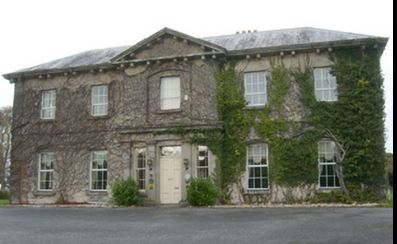
|
| Urbalshinny | William Armstrong was leasing two properties which included a house and large mill complex, from the Hamilton estate at the time of Griffith’s Valuation. One, leased from Andrew Hamilton, was valued at £95, while the second leased from the representatives of John Hamilton, was valued at £37. The extensive ruins of these mill buildings and their associated houses are still visible in the landscape | |
| Brown Hall | The house at Brownhall was valued at £35 at the time of Griffith’s Valuation, when it was occupied by James Hamilton, junior who held it in fee. Brownhall is still extant and occupied. In 1837 Lewis recorded it as the seat of Edward Hamilton.The house is labelled Brownhall on all editions of Ordnance Survey maps and a house remains at the site. The National Inventory of Architectural Heritage suggests the original part was constructed in the late seventeenth or early eighteenth century but the house currently in use is later than that. | |
| Coolbeg | ||
| Tullybrook | Charles Johnston was leasing this property from the estate of the Provost and Fellows of Trinity College at the time of Griffith’s Valuation. The buildings were valued at £20 at the time. This house appears to have been built after the 1st edition Ordnance Survey map of the 1830s. It is labelled Tullybrook on the later editions. It is now a ruin. | |
| Drumbeg House (Inver) | A house named Drumbeg or Cloverhill is shown in the townland of the same name on the 25-inch Ordnance Survey map. At the time of Griffith’s Valuation in the 1850s, it leased by William Sinclair from the Conyngham estate and valued at £21 15s. Drumbeg House is still extant. |
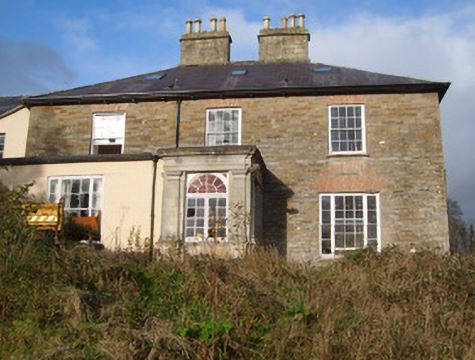
|
| Cavangarden House | Thomas J. Atkinson held this property in fee at the time of Griffith’s Valuation, when it was valued at £20. It still held this valuation in 1906. A second property in the townland, valued at almost £8, was occupied by John Atkinson, leasing from William Atkinson. Lewis had also noted it as a seat of the Atkinson family in 1837. Cavangarden is still a working farm where guest accommodation is provided. | |
| The Hall (Inver) | This property was held in fee by the Marquis of Conyngham’s estate at the time of Griffith’s Valuation, when it was valued at £38. Lewis records that it was occupied by a Colonel Pratt in 1837, though notes that it was a seat of the Conyngham family. The National Inventory of Architectural Heritage suggests the house was built some time in the 1750s. It is still extant. |
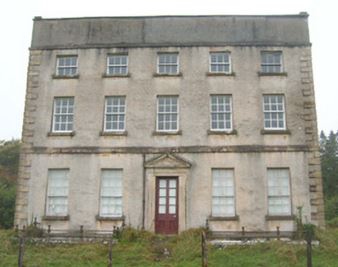
|
| Salthill House (Inver) | Robert Russell was leasing this property from the Conyngham estate at the time of Griffith’s Valuation when it was valued at £20. It is still extant and occupied. A smaller property, labelled Sea View, is shown on the shoreline adjacent to the main house on the 1st edition Ordnance Survey map but is not labelled on the later editions. |
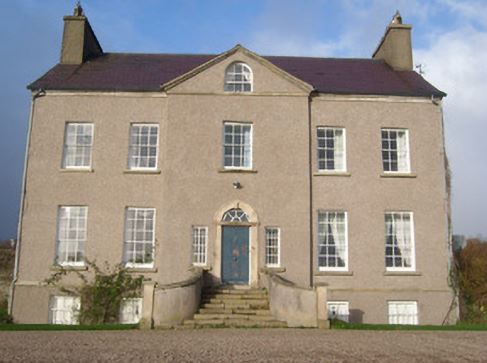
|
| Wood Lodge (Inver) | Daniel J. Cruise was occupying this property at the time of Griffith’s Valuation, when it was valued at £10 and leased from the Conyngham estate. It is labelled Wood Lodge on the 25-inch Ordnance Survey map. | |
| Brown Hall (Tirhugh) | James Hamilton held Brownhall in fee at the time of Griffith’s Valuation, when it was valued at £35. In 1837 Lewis recorded Brown Hall as the seat of Reverend Edward Hamilton. The house is labelled Brownhall on all editions of Ordnance Survey maps and a house remains at the site. The National Inventory of Architectural Heritage suggests the original part was constructed in the late seventeenth or early eighteenth century but the house currently in use is later than that. | |
| St. Ernans | John Hamilton held St. Ernans in fee at the time of Griffith’s Valuation when the building complex was valued at £46 as well as a mill valued at £28. In the later 20th century the property functioned as a hotel. The National Inventory of Architectural Heritage suggests it was built in the 1820s but extended and modified later in the nineteenth century. It is still extant. |
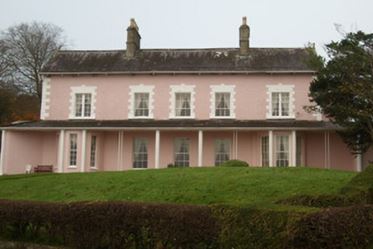
|
| Magherabeg (Tirhugh) |
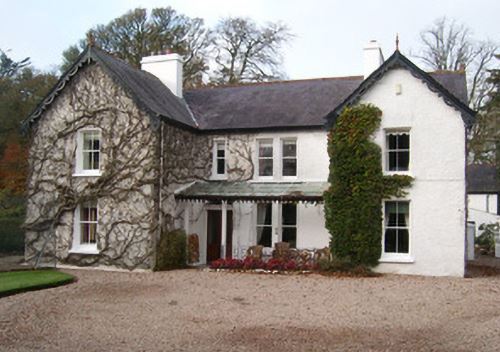
|
|
| Ardchicken House | At the time of Griffith’s Valuation, Samuel Fyffe was leasing this property from the Hamilton estate when it was valued at over £16. A house is still extant at this site. | |
| Rossyvolan | At the time of Griffiths Valuation in the 1850s, this property was leased by Frederick Milburne from a Miss Miller. Documents relating to estate administration including this townland are held in the Hamilton of Brownhall papers at the Public Record Office of Northern Ireland. The site is now occupied by farm buildings. | |
| Milltown House (Killymard) | William Graham was leasing this property from the Murray Stewart estate at the time of Griffiths Valuation in the 1850s when it was valued at £30. The house was built after the publication of the 1st edition Ordnance Survey map when the site was occupied by a spade foundry. Buildings are still extant at the site. | |
| Rossylongan House | Robert Steele was leasing this property from the Murray Stewart estate at the time of Griffiths Valuation in the 1850s when it was valued at £16. He had previously leased it from the Murray estate as he is recorded by Lewis as the occupant in 1837. Murray Babington is noted as the owner of property in this townland in the Tithe Applotment records from the 1820s. In the early twentieth century the house was owned by Patrick McManus, a Donegal man who had settled in Argentina. Rossylongan is no longer extant. |
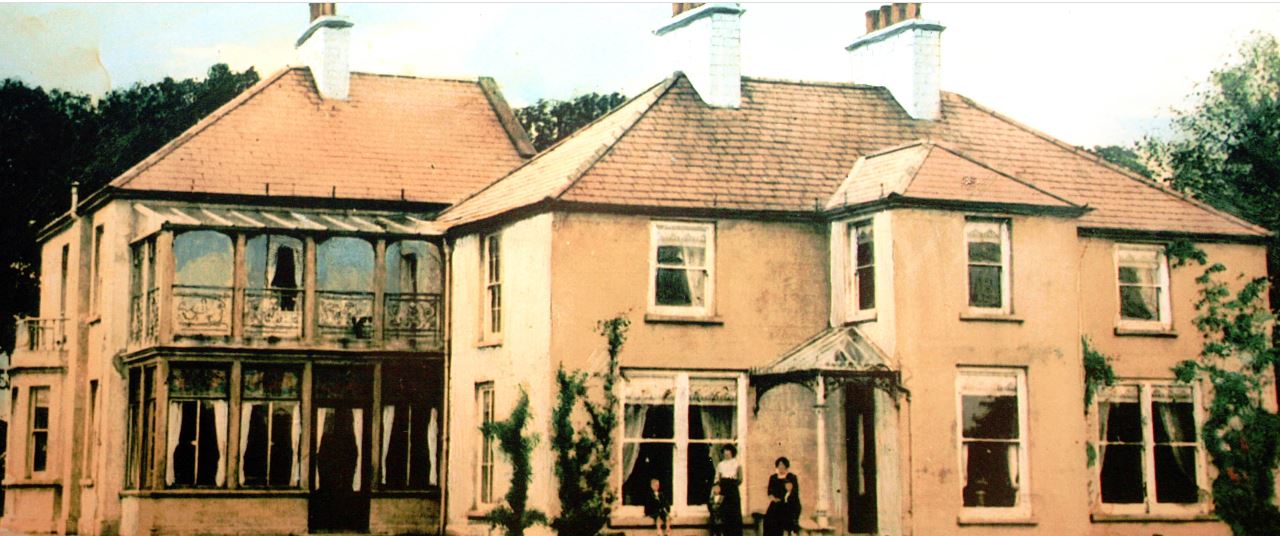
|

